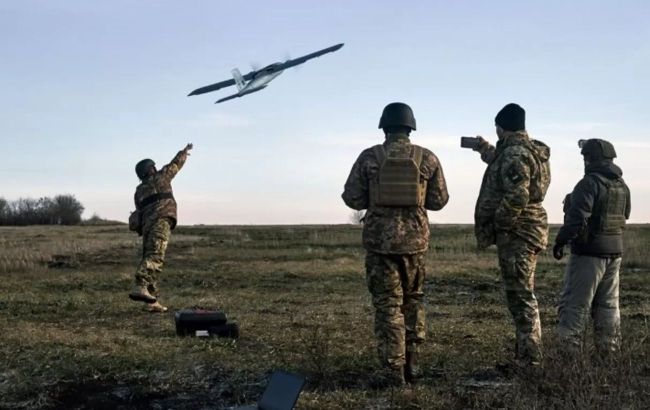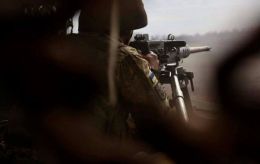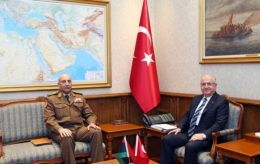Ukraine can't counterattack for another six months, but West assistance could change everything - ISW
 Illustrative photo (armyinform.com.ua)
Illustrative photo (armyinform.com.ua)
Western partners' assistance can help Ukraine’s Armed Forces overcome Russia's artillery advantage, seize the battlefield initiative, and alter the war's trajectory, citing the Institute for the Study of War (ISW).
The report highlights that recent US intelligence assessments emphasize Ukraine’s efforts to develop alternative and asymmetric capabilities in response to Russia's superiority in manpower and equipment, as well as the country's ongoing dependence on Western security assistance.
Russia’s artillery advantage
On August 15, the US Department of Defense, in its quarterly review of US military aid to Ukraine, published several assessments from the Defense Intelligence Agency (DIA). The Pentagon's intelligence agency's evaluations largely align with trends and phenomena observable in open sources but are analyzed based on static rather than dynamic conditions on the battlefield.
According to the DIA, recent US military aid to Ukraine is almost certainly insufficient to help the Armed Forces of Ukraine (AFU) match or surpass Russia's artillery advantage, which is estimated at 10,000 artillery rounds per day.
Ukrainian servicemen have consistently expressed concerns about the shortage of Ukrainian artillery following significant delays in US aid during the winter of 2023-2024 and spring of 2024. Ukrainian officials have previously acknowledged the impact of artillery limitations on Ukraine's defensive and offensive capabilities, particularly in the Donetsk region.
"Destructive Russian shelling and glide bomb strikes appear to be a fundamental aspect of the Kremlin's theory of victory in Ukraine, which posits that Russian forces can continue slow, grinding advances aided by razing Ukrainian settlements to the ground regardless of Russian manpower losses and premised on the assumption that Russian forces can deprive Ukraine of the ability to contest the theater-wide initiative in perpetuity," the ISW report says.
Ukraine’s achievements
At the same time, the Institute for the Study of War continues, that Ukrainian forces have demonstrated the ability to develop and employ alternative and asymmetric capabilities. Primarily, this includes long-range drone strikes to partially counter Russia's artillery superiority in Ukraine and protect against Russian mechanized and infantry attacks, often with greater effect compared to the less powerful systems used by Ukrainian forces.
ISW recalled that at the end of July 2024, the AFU successfully defended against a series of large-scale Russian mechanized attacks in the western Donetsk region using drone strikes and limited artillery support. Russian military bloggers warned of the threat of targeted Ukrainian drone strikes from a first-person view (FPV) across the entire frontline in Ukraine.
Ukrainian forces, the Institute continues, are also conducting long-range strikes on Russian military facilities and oil depots supplying military equipment to complicate Russian logistics, force the aggressor country to redeploy air defense assets, and undermine Russia's oil and gas industry.
"The most recent allotment of US aid to Ukraine is undoubtedly insufficient to address the ongoing artillery disparity between Russian and Ukrainian forces and asymmetric means are not a replacement for artillery and other conventional means, but the US and wider Western alliance remain capable of addressing Ukraine's constraints caused by delays in Western security assistance," the ISW report says.
The Pentagon's Defense Intelligence Agency (DIA) also assesses that Ukraine "likely" remains capable of continuing defensive operations, but is not able to conduct large-scale counteroffensive operations for at least the next six months.
AFU could seize initiative
Recently, the Institute for the Study of War assessed that neither Russian nor Ukrainian forces can conduct separate decisive winning operations. Instead, they must conduct numerous successful operations with limited operational objectives, which together can achieve strategic goals.
ISW continues to assess that Ukrainian forces could use smaller-scale counterattacks and localized counteroffensive operations to liberate territory while avoiding the challenges associated with conducting large-scale counteroffensive operations amid ongoing delays and Western indecision regarding further military aid to Ukraine.
The Institute recalled that in recent months, Ukrainian forces have conducted several localized counterattacks in the northern Kharkiv region and toward Kreminna (on the border of Luhansk and Donetsk regions), indicating attempts by the AFU to seize the tactical initiative on specific sections of the front.
Moreover, Ukrainian forces have managed to launch a localized offensive operation in the Kursk region and seize the operational initiative on this section of the front, diverting Russian troops from other, less-priority areas of the front in Ukraine.
The ISW report notes that Ukrainian officials have identified the diversion of Russian troops from less priority areas of the front as a key objective of Ukraine’s incursion into the Kursk region, and these efforts may force Russia to leave some of these areas vulnerable to further Ukrainian counterattacks.
The Institute for the Study of War continues to assess that Ukrainian forces can seize the battlefield initiative and ultimately create conditions for both limited and large-scale counteroffensive operations, providing timely and adequate Western security assistance.
"The US and the international coalition supporting Ukraine retain significant influence over Ukrainian warfighting capabilities and Western decisions about Ukraine’s resourcing levels and rules of engagement regarding Russian military targets can substantially alter the trajectory of the war," ISW concluded.
Ukrainian forces have made further advances in Russia's Kursk region in the past day.
The military officially confirmed that they destroyed bridges and Russian pontoon crossings in the Kursk region using HIMARS systems.
Meanwhile, the aggressor has redeployed units from eastern Ukraine to the Kursk region.

